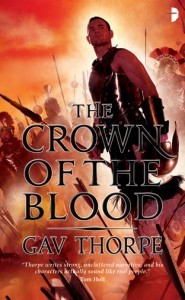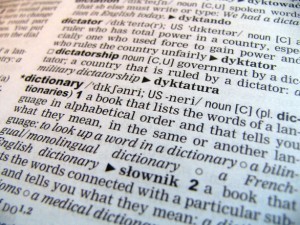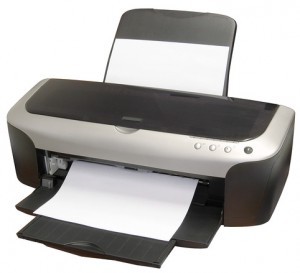Things I Always Do
 Most writing advice comes from a place of idealism – all the things you should think about, do and experience in a perfect world. Cajoling the creative spark, research, preparing, putting in the hours, reading good stuff, editing and rewriting, redrafting, copy editing, putting it aside for 6 months, reading groups and feedback, reading the work out loud, spellchecking; the list goes on and on.
Most writing advice comes from a place of idealism – all the things you should think about, do and experience in a perfect world. Cajoling the creative spark, research, preparing, putting in the hours, reading good stuff, editing and rewriting, redrafting, copy editing, putting it aside for 6 months, reading groups and feedback, reading the work out loud, spellchecking; the list goes on and on.
That’s great if you are working on your first novel and don’t have a deadline, or you have achieved the sort of success that allows you to write one book every now and then, or you have a day job that actually pays the bills.
The reality for many writers, full-time or otherwise, is that we must cut the cloth to fit. To keep a roof over our heads, pay the bills and feed the family I need to put out a certain amount of work every year. If you want to write as a career (and by that I mean hedging your bets by putting out a consistent volume of work over a period of years, even if you have alternative income)then you have to learn where and when to spend the time and when to be more pragmatic.
I’m not in that mould of writers that are filled with self-loathing by every word they set on the page. I enjoy writing, even when it’s difficult and slow, and despite the odd hiccup I believe I have some degree of skill. However, there is always room for improvement. From typos spotted too late to characterisation opportunities missed, to wonky dialogue, it can always get better with another read-through and edit.* At some point though, the ‘Print and be Damned’ principle applies, and the more deadlines you have the better you have to be at being light on your feet with this sort of thing.
(*Except not. When getting ready to pitch The Crown of the Blood to Marc Gascoigne at Angry Robot I redrafted the first ten thousand words so many times I turned it into a big pile of purple turds. Like an overworked dough it was stodgy and heavy. The pace at which I normally write is directly linked to my natural style and by rewriting so many times I wandered from the well-trodden path into the thickets and got lost. Thanks to some copious red pen from Marco it was a mistake I have avoided since.)
So, bearing in mind that time is not a limitless resource, these are the things I always do when writing.
Some writers don’t like planning. I get that. I’ve tried it. It’s liberating in its way. It’s also really inefficient. There’s a certain mystique, almost pride about ditching 30,000 words in the redraft, or axing an entire character, or adding a whole subplot. That wastes quite a lot of time, on top of the time already spent on the first draft.
What works really well is doing all of that thinking and chopping in summary form – a synopsis or chapter plan. Moving a chapter in a synopsis is far less aggravation than doing it in a full draft. I know because the last couple of projects I’ve worked on I’ve had to do some of that and it’s a pain in the arse.
Planning doesn’t stifle creativity, it provides a framework for it. It forces you to think about what you are going to write before you commit – it allows you to ask questions and come up with the answers before you get bogged down in the trenches of the actual manuscript.
Things will change. Chapters might still move. Characters may still turn up or get dropped, storylines can be flexible, but far less than if you wing it all of the way through the first draft.
Try it.
Don’t start with all that ‘But I’m an artiste’ rubbish. ‘I don’t know what I’m writing about until I’ve written it’, you say? Well, that’s going to be really tricky because a lot of agents and publishers these days are looking to sign two- and three-book deals, so unless you’ve got something for numbers two and three you could be out of luck.
Sit down with all of those great ideas in your Moleskin or whatever it is that cool writers use these days, and put them into a logical order in a plan first. Use post-its, or Scrivener, or carefully arranged mosaic; whatever it is you need to help you rearrange and organise your thoughts. It’s only fair, I’ve tried writing stories without a plan so you owe me at least a token effort in return.
No, seriously, you need me to say this? Of course not, you’re already one of the sensible ones. And yet… You can’t rely on a spellchecker to catch everything but it does have to be your first port of call. Create a custom dictionary so you can add the names of characters and weird stuff that you’re bound to make up. It will instantly highlight when Colonel Grober became Colonel Gruber (unfortunately it won’t show you when he mysteriously became General Grober, that’s still on you).
On the other hand, it may be useful to turn off the in-line spelling and grammar checker. If you type fast but badly like me you’ll be bombarded with a page of red squiggly lines before you know it, and then you’ll want to go back and edit them, and then you’ll be rereading it all again rather than getting on with the first draft. (Incidentally, the Path of the Eldar books had so many crazy alien names and phrases that Word stopped trying to highlight them all about 2/3rds of the way through each first draft!)
Blacklist Bad Words and Phrases
I have a list of words and phrases that I use too much. ‘Moment’ is one of them. In my first drafts everything takes a moment, happens in a moment or lasts a moment. Events inevitably happen a moment later or for a moment. ‘Toward’ and ‘forward’ are others. ‘Then’ and ‘Now’ are good ones to look out for.
You can find some examples of common ‘weak’ words in this post but you also need to find your own little tics and foibles. Perform a Find function and delete them wherever possible. Or you can usually use the function to highlight the words in the prose if you want to see them as you are editing on screen. If you think you use a word too much, you can do a simple Find and Replace, it’ll tell you how many times the word has been used.
It’s worth doing this on the nouns you’ve used to avoid using a character’s name too many times (‘the detective’, for instance). Often changing to a pronoun works just as well.
Find them, kill them, don’t even blink.
While you are doing this, it’s also worth checking the words you frequently mis-type but that are still words. I almost always type ‘from’ as ‘form’. Muscle memory is a killer for this one. Sometimes the grammar checker picks it up, but not always, so I Find ‘form’ and inspect every incidence myself. I also have a habit of appending the ‘t’ in ‘the’ to the word in front – the word gets highlighted but the resultant ‘he’ doesn’t, so I have to keep a special eye out for that.
This is one that I am not so good at, but I am much better than I was.
Print out your story and read it. You cannot process the same amount of information on a screen, about 20% less according to some studies. Get the red pen out and get at it.
This can be quite troublesome for a full length novel, so find a good, secure document printing service online. The benefit of this is that you can usually get a decent binding for not much cost, which will stop you losing pages, having to staple a 300-page doc or other nonsense.
If you are using readers, an author’s group or similar, ensure they are reading from hard copies too (even if you have to go to the expense of providing them). If you have to, let them share a copy, but on the whole it is better if everyone reads their draft ‘clean’, free of anyone else’s thoughts or comments.
Mini-tip: While on the subject of feedback, collate all of it first before doing a redraft. For instance, if you are waiting on corrections and comments from a reader or editor don’t put in your own until you have everything. You can certainly do the red pen thing while you are waiting, just don’t touch the actual manuscript. Redraft as few times as possible – you won’t change something that needs to be changed again or later creates a contradiction.
Format Properly
Pertinent to the above, it helps immeasurably if you write with indented paragraphs (default setting is fine, the editors will change it to their own house style), use at least 1.5 spacing whilst writing and double spaced for printing. A 6-10pt paragraph spacing will help too. Proper margins as well.
And a sensible font. 12 point Times, Calibri, sometimes Courier is suggested but I think it’s a horrible font to work with on a screen.
Don’t try to save printing costs by using a smaller font, single-spacing, etc.
Basically, the reasons why things look good and read well on the printed page apply equally to when you are working on the manuscript – space and good format allow you to read more easily. It also saves time when it comes to submitting to a publisher if you already have most of the style in place.
Check out William Shunn’s formatting guidelines – if it helps an agent or editor to read your story it will help you!
Finish the Draft First
Don’t print out the first couple of chapters and start editing as soon as they are ready. There are a couple of good reasons for this.
Firstly, despite all of that planning you did (you did, right?) things might change. Until that first draft is done and dusted, you might want to go back and change what comes before. Need to introduce a character earlier? Came up with a cool thing but you want to foreshadow it? That thing you blew up in Chapter Five would be better off intact in Chapter Twenty?
Get everything down first, all the ideas on the page, and then you can evaluate them. You might find that the battle you thought would last for four chapters lasts for seven or one instead. Something else might expand in its place or need to be cut. Better to do these things digitally first, before you spend time with the red pen.
The editing process works something like this: big structural changes – refinement – copy editing – proofreading. You might well miss the first phase if you get sucked down into the detail of the second by reading every word and line.
 Secondly, you’ll get into the situation I did with the opening of The Crown of the Blood spiralling into an ever-decreasing circle of editing the same parts again and again. You’ll write the first few chapters, make the corrections and then edit them again. Not only might this lead to it being overwritten in places, it will mean you spend all your time perfecting the first half of the story or book and then don’t have enough time to properly edit the second.
Secondly, you’ll get into the situation I did with the opening of The Crown of the Blood spiralling into an ever-decreasing circle of editing the same parts again and again. You’ll write the first few chapters, make the corrections and then edit them again. Not only might this lead to it being overwritten in places, it will mean you spend all your time perfecting the first half of the story or book and then don’t have enough time to properly edit the second.
Try to work in complete drafts and make sure you mark the files properly – version management is essential!
Number Your Chapters
Even if you intend the chapters to have titles in the final version, or just numerals, always start each new chapter with the word ‘Chapter’. This makes it much easier to Find if you start to chop stuff around. When you’ve done with that, you can then jump from one to the next and make sure they all have the right numbers in sequence.
(If you use something fancy like Scrivener or actual proper header formats you can do this with different style sheets instead. I tried using Roman numerals for a time but that was more hassle than it’s worth when you have to renumber.)
Mini-tip: use the running headers and footers function to auto-update the date and put in page numbers – much easier to check versions and talk about changes if you have these references in common with readers and editors.
Hopefully that will help you become a slick writing machine. Other stuff – the reading out loud and all that – can come if you have the luxury of time. One day perhaps I’ll be a-novel-a-year sort of author, but until then I’ll just have to stick with well-planned, quick and clean.
Oh, and the best way to ensure no time gets wasted? Autosave and back-ups. Always.
What are your “must-do” actions when completing a piece of writing? Use the comments section to let me know.
**To make sure you don’t miss out on any blog posts, you can keep up-to-date with everything Gav by signing up to my monthly newsletter. As a bonus, every other month I randomly pick a newsletter subscriber to receive a free signed copy of one of my books.**






